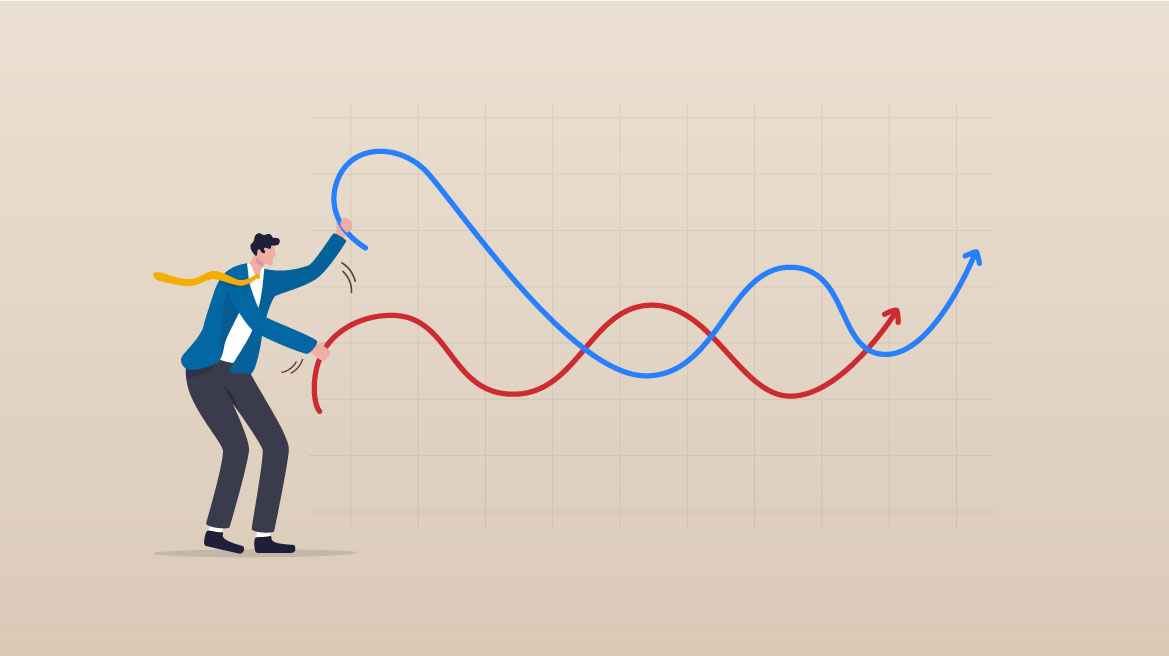
Stock Market Volatility: How You Can Navigate The Ups And Downs

While it is natural for some investors to panic whenever the marketplace seems especially uncertain, there are better ways to handle the constantly shifting figures in the stock market.
In this article, we will take a look at some helpful tips to aid investors as you navigate the ups and downs of the stock market.
Accept the Risk Factor – Learn How to Manage It
“Risk” and “volatility”… these two aspects of the stock market sound like the same thing. In fact, although they are related, they are not the same.
Put simply, volatility tracks how much the entire stock market fluctuates from moment to moment. Volatility can also refer to how much the return of a particular investment is shifting up or down, in relation to the broader market.
Risk, meanwhile, sounds like something you would want to avoid at all costs, right? When it comes to investing, not quite.
In investment parlance, risk indicates the level of uncertainty or possibility for financial losses that comes with any investment decision.
While it may sound like the solution to optimizing gains is to avoid investing in any assets that are deemed to be risky, this is not always true.
Cutting back on your investment in risky assets will lower your overall market risk, but it may also reduce your overall purchasing power and erode your savings.
Instead, learn how to manage the risk factors by keeping a balanced portfolio with a mixture of fluctuating stocks and equity.
Investing in the stock market comes with inherent risks; that is part of the bargain. Gear yourself up for success in the long term by diversifying your portfolio and keeping your assets in the market for an extended period of time.
Don’t Quit, Keep Playing the Game
Attempting to keep up with the frequent fluctuations of the market is a risky endeavor.
While it may seem like a smart move at the time to withdraw your funds while the market dips downward, you never know precisely when the next uptick will be.
Taking a break for a while can be reassuring, but it can also come at a cost.
Investors who stay focused on long-term goals and keep their assets continuously invested over a ten-year period can reap the rewards, earning double the profits of investors who miss out on high performance days.
Even missing just ten days when the market is outperforming can reduce the overall amount of your entire return potential.
When that number is magnified to twenty high-performance days missed or even an entire month, your profit margins can drop exponentially.
While it may not seem like a lot, a few days can make a huge impact. Staying focused on long-term goals can keep you on track to maximizing your return potential over time.
Stay Focused
When you have got a stake in the game, so to speak, watching the value of your stocks plummet can be a hugely distressing situation.
But if the dips in your emotional rollercoaster lead to panic and rash decision-making, then you are not playing the game as you should.
Keep a cool head and try to think clearly before impulsively buying or selling your stocks based on a temporary setback in the market.
While a financial loss will always feel much more significant than the same level of financial gain, the key to investment success is to maintain your composure during even the most frustrating times.
Be aware of how particularly volatile periods can impact you emotionally and try to establish a plan in advance that can help you stay disciplined and focused.
Remember that investing in the stock market requires reaching towards your goals- and it can take a while to get there.
Be patient and learn how to manage the emotional impact of the risk factors involved in buying and selling stocks.
Diversify Your Portfolio
The key to long-term success is a diverse, well-balanced portfolio of assets. Perhaps you have heard the phrase “don’t put all your eggs in one basket”.
Well, this logic holds true for investing as well. Diversification involves combining different categories of investments in one portfolio.
Spreading out your assets this way minimizes risk and allows you to benefit from whichever type of asset is doing the best during that year.
There is no single type of asset that consistently outperforms the rest, so diversifying gives your portfolio more opportunities to grow.
In addition, some types of investments react differently to others when it comes to broader financial and market events.
With a diverse portfolio, the assets that gain in value can offset the assets that lose value year to year.
Keep it Balanced
Risk and volatility go along with investing, which can’t be helped. But what you do with those uncertainties can make a huge difference in terms of the long-term overall value of your assets.
Stay focused on long-term goals. Keep your assets invested to avoid missing out on high-performance market days. Diversify your portfolio and keep it balanced.
Keeping track of which percentage of your portfolio is comprised of what kinds of assets is easy with the Wealthface app.
The app features automated portfolio balancing, which makes it a breeze to navigate the ups and downs of the ever-changing, volatile stock market.
Using the portfolio balancing tool will help keep you on track towards meeting your long-term investment goals without getting overwhelmed by the constant ups and downs of the market.


- Buy any stock with $1
- Access AI Analysis
- Monitor stock scoring
- Select portfolio strategies
- Access real market price



